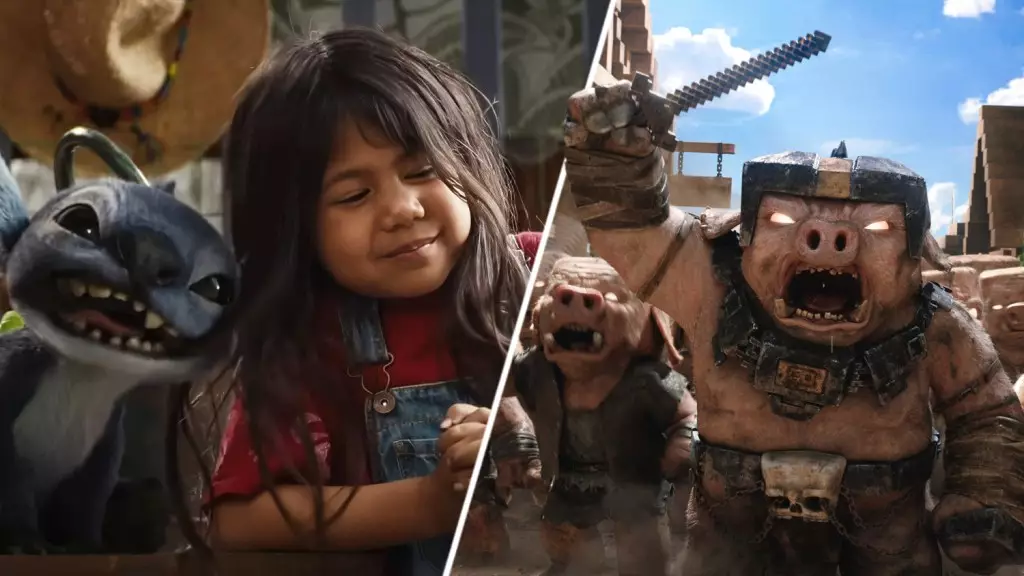In an era where Hollywood’s bright shiny objects fade quickly, Disney’s “Lilo & Stitch” live-action reboot has defied conventional wisdom, proving that nostalgia remains a formidable economic force. The film’s remarkable performance—in its sixth week dominating box office charts—cannot be chalked up to mere coincidence. Instead, it signals a decisive shift in audience preferences, especially among women, who constitute a significant 62% of the film’s viewers. It is a testament to the power of beloved characters and stories that the industry once thought outdated or “kid-centric” can now command huge financial returns in a post-COVID recovery landscape. This paradoxical trend raises a fundamental question: Has Hollywood underestimated the value of nurturing nostalgia as a strategic asset? The latest data suggests a resounding yes.
Hollywood’s recent focus has often been on blockbuster spectacle and franchise fatigue, but “Lilo & Stitch” demonstrates there remains a market for emotionally resonant, character-driven stories rooted in shared cultural memories. By catering to the nostalgic demographic, Disney has effectively revitalized a beloved property that once only modestly performed at the box office—its original 2002 animated release made $145.7 million domestically—into a phenomenon grossing over $403.7 million domestically alone. This resurgence underscores a larger, overlooked industry truth: that well-crafted nostalgic titles are a low-risk, high-reward strategy for studios in an era where theatrical confidence is slowly rebuilding.
Market Penetration and Global Appeal: The New Power of Cultural Resonance
While the domestic box office is an essential measure of success, the global footprint of “Lilo & Stitch” reveals an even more critical shift. The film is already the top-grossing release of 2025 in several Latin American markets like Mexico, Brazil, and across all of Latin America, with Mexico alone accumulating $66.1 million. Its international numbers—totaling $530.9 million—highlight that cultural resonance transcends language and borders. The film’s ability to outperform “Minecraft,” a blockbuster with an incredible $954.9 million worldwide gross, indicates that nostalgia-driven titles can carve out sustainable niches even amidst fierce competition from IP-centric behemoths.
Furthermore, the film’s impressive performance in key markets like France, Italy, and Canada—where it is already the highest-grossing Disney live-action film of all time—demonstrates an aggressive, strategic localization effort. Disney’s insight into regional preferences, especially for properties with emotional depth and charm, is proving to be a vital differentiator. This regional dominance, combined with strong performance in countries like Japan and Australia, frames “Lilo & Stitch” not just as a box office hit, but as a strategic asset capable of consolidating market share in the long run.
The Industry’s Reckoning: Can Nostalgia Sustain Franchise Powerhouses?
Despite this success, critics may argue that relying heavily on nostalgic properties is a risky echo chamber, potentially risking creative stagnation. However, Disney’s mastery in leveraging existing IP also reveals a shrewd understanding of consumer loyalty, which is arguably more sustainable than constantly chasing new IPs that may or may not resonate. The upcoming sequel “Freakier Friday,” with its star power and proven franchise strength, exemplifies this trend: the company is doubling down on properties with cultural staying power.
Yet, the core issue remains whether studios can sustain this model as audiences evolve and new generations emerge. In a digital-first age where attention spans are fleeting, Disney’s success suggests that emotionally-ingrained narratives, rooted in childhood innocence and familiarity, command repeat viewings and retail loyalty—proof that “long-term franchise health” requires more than just new ideas; it demands an ongoing relationship with the audience’s nostalgia.
The fact that Stitch, a character originally introduced in 2002, now drives $2.6 billion in retail sales—expanded tenfold from 2019—further demonstrates the lucrative potential of emotional branding. Disney’s strategic focus on spins, merchandise, and digital engagement emphasizes how nostalgia is no longer a fallback, but an integrated component of future growth. It’s a savvy acknowledgment: the consumer’s emotional attachment to the characters and stories they grew up with is among the most reliable revenue streams in a volatile industry.
Disney’s “Lilo & Stitch” exemplifies a broader industry paradigm shift—nostalgia, correctly harnessed, can serve as a potent counterbalance to the volatility of Hollywood’s latest fad cycle. This film’s impressive numbers reveal that, when executed with cultural sensitivity and strategic marketing, even a modestly performing animated classic can be transformed into a multi-billion dollar franchise, redefining what success looks like in a reshaped, post-pandemic entertainment landscape.

